 |
 |
 |
| |
EFFECT OF DIRECT-ACTING ANTIVIRALS ON HCV INCIDENCE AMONG PEOPLE LIVING WITH HIV
|
| |
| |
CROI 2022 Feb 15
-Incidence was 0.5/100 PY vs 5/100,000 PY (new absolute target) - actual new incidence much less than the target
- COVID Impact has been bad so we must see if we can recover. In this study there was 50% average reduction in HCV incidence compared to pre-DAA incidence but only where there is broad access, and no reductions during [where there is] restricted access which is defined where only severe liver fibrosis was treated. And incidence did not decline where there was restricted access, it declined only where there was broad access - see graph below.
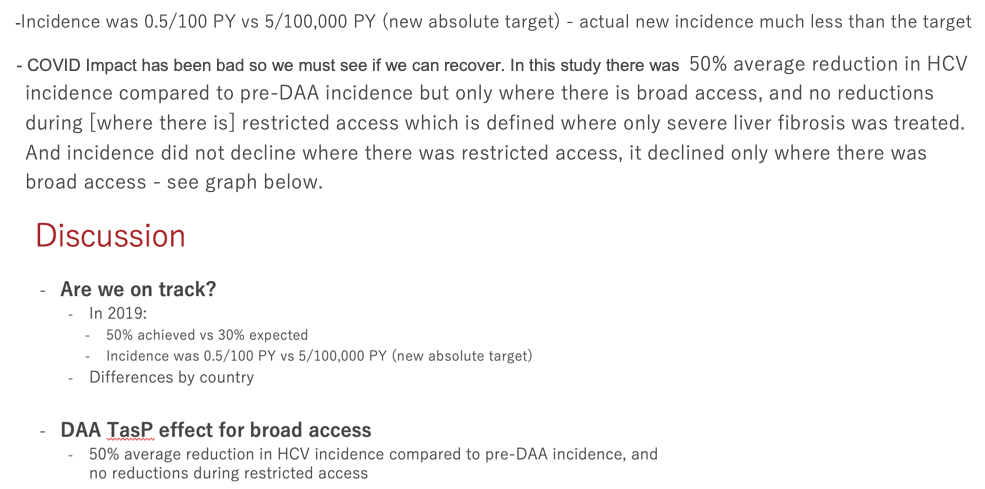
Daniela K. Van Santen1, Rachel Sacks-Davis1, Marc Van der Valk2, Mark Stoove1, Andri Rauch3, Inma Jarrín4, Karine Lacombe5, Linda Wittkop6, Gail Matthews7, Joseph Doyle1, Marina B. Klein8, Maria Prins9, Tim Spelman1, Margaret Hellard1, for the InCHEHC
Collaboration
1Burnet Institute, Melbourne, Australia, 2Academic Medical Center, Amsterdam, Netherlands, 3University Hospital Bern, Bern, Switzerland, 47 Instituto de Salud Carlos III, Madrid, Spain, 5Sorbonne University, Paris, France, 6University of Bordeaux, Bordeaux, France, 7Kirby Institute, Sydney, Australia, 8McGill University Health Centre, Montreal, Canada, 9Public Health Service Amsterdam, Amsterdam, Netherlands
program abstract
Background:
The World Health Organization (WHO) strategy to eliminate hepatitis C virus (HCV) as a public health threat aims at reducing incidence by 30% in 2020 and by 80% in 2030 compared to 2015. Universal access to direct-acting antivirals (DAA) can reduce HCV incidence through a treatment as prevention effect. We aim to monitor progress towards HCV elimination, including changes in primary HCV incidence by calendar year and following DAA introduction among people living with HIV (PLHIV).
Methods:
We used pooled data from 6 cohorts from the International Collaboration on Hepatitis C Elimination in HIV-coinfection (InCHEHC), including data from the Netherlands, Switzerland, Australia, Spain, and France (2010-2019). For incidence, follow up started from the first negative HCV-antibody test date until last negative antibody test or infection date which was estimated as the midpoint between last negative and first positive test dates. To monitor elimination progress, we calculated annual rates. We used interrupted time series analysis to assess the effect of DAA introduction on incidence. We aggregated data in 6-monthly intervals. Time zero was aligned across cohort to indicate the interval between the date of DAA introduction in each country to 6 months thereafter.
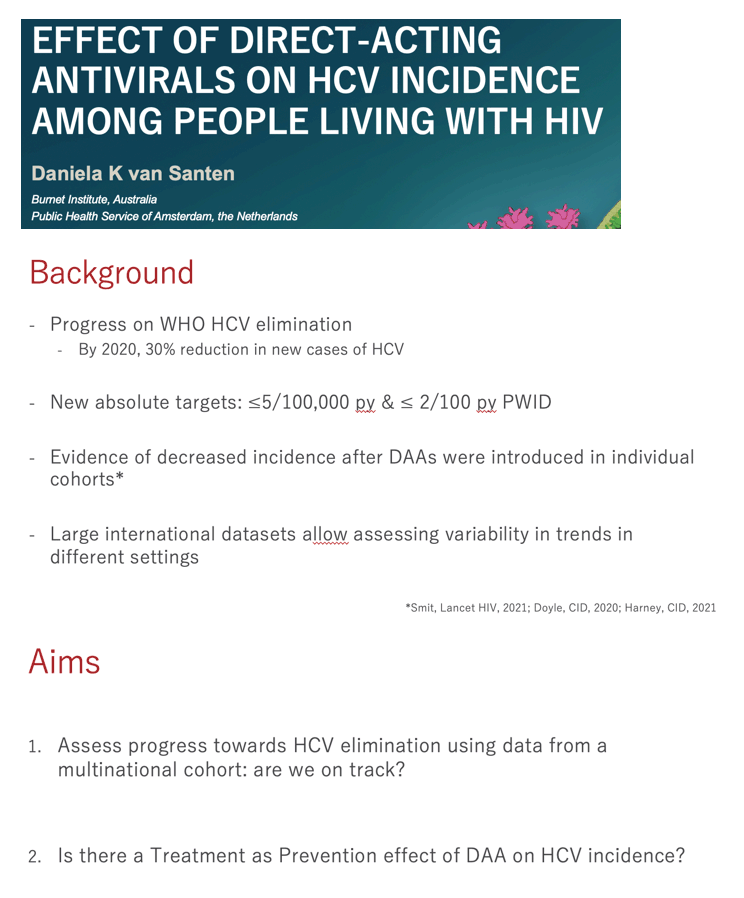
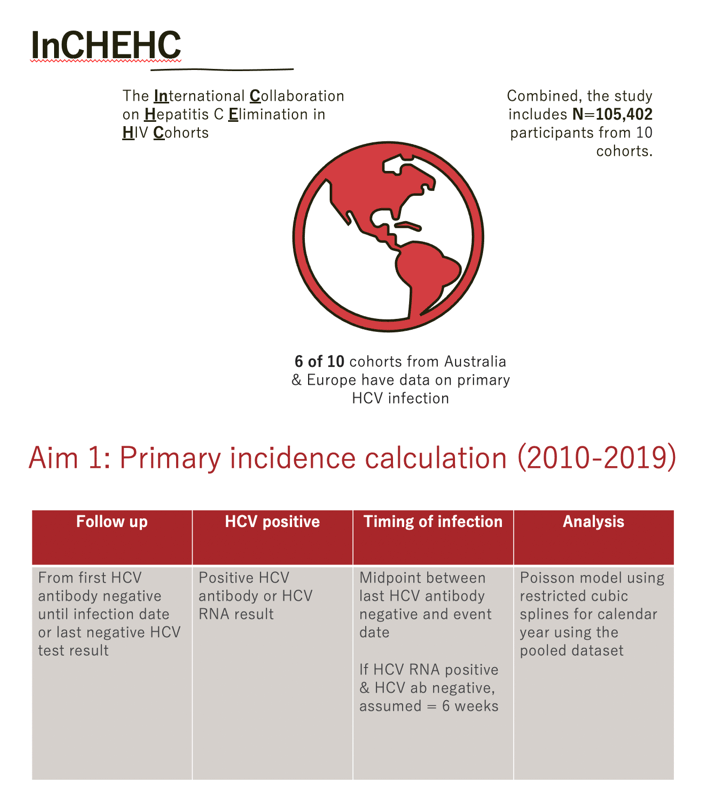
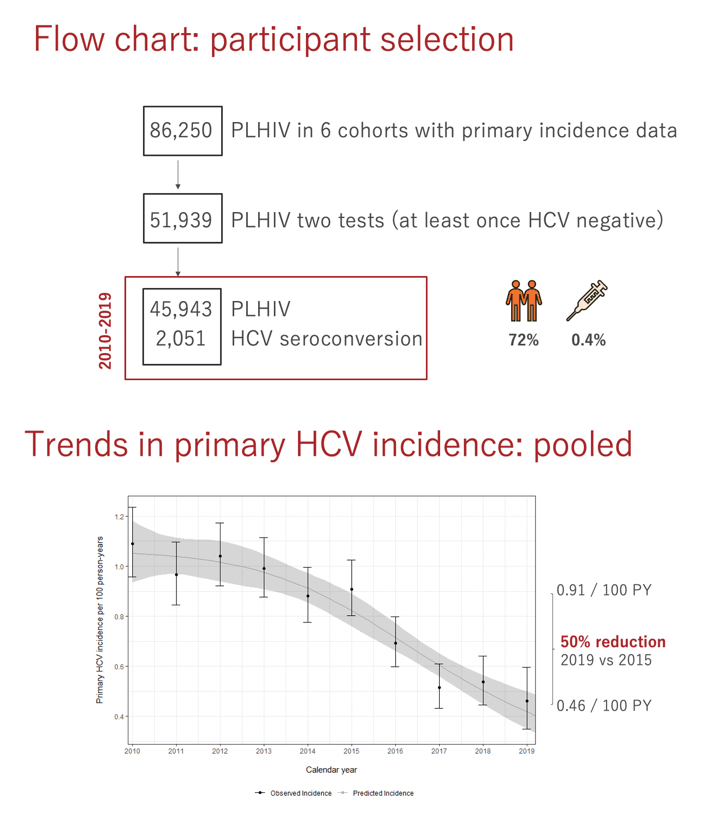
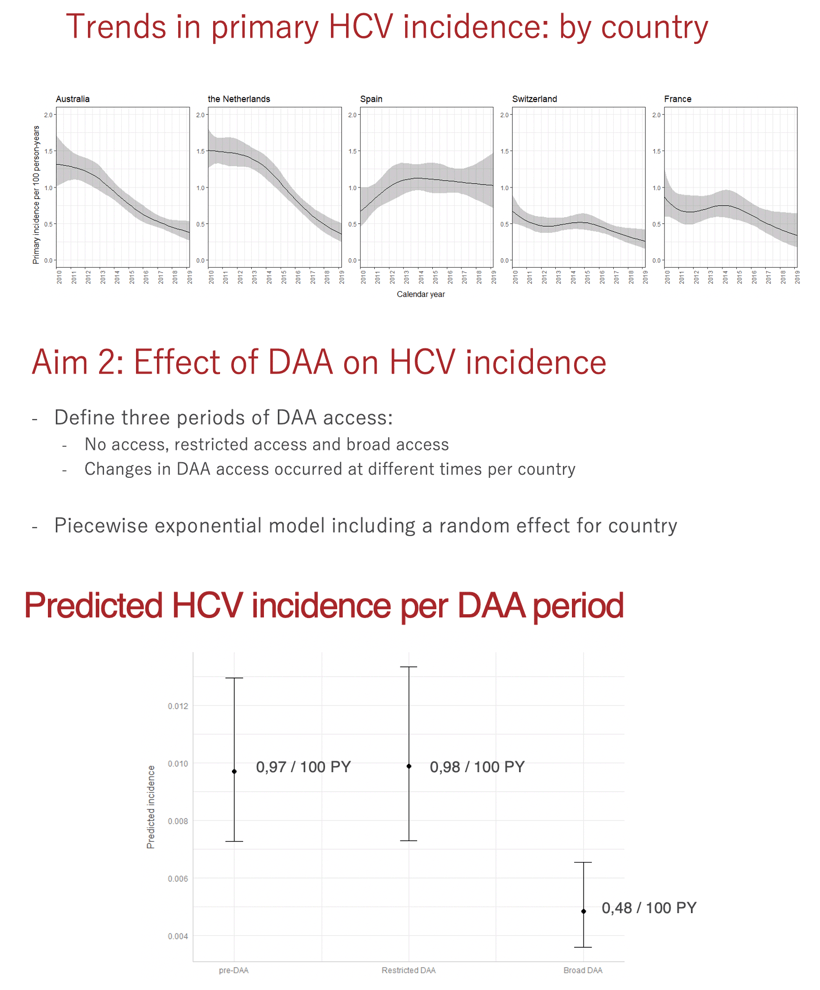
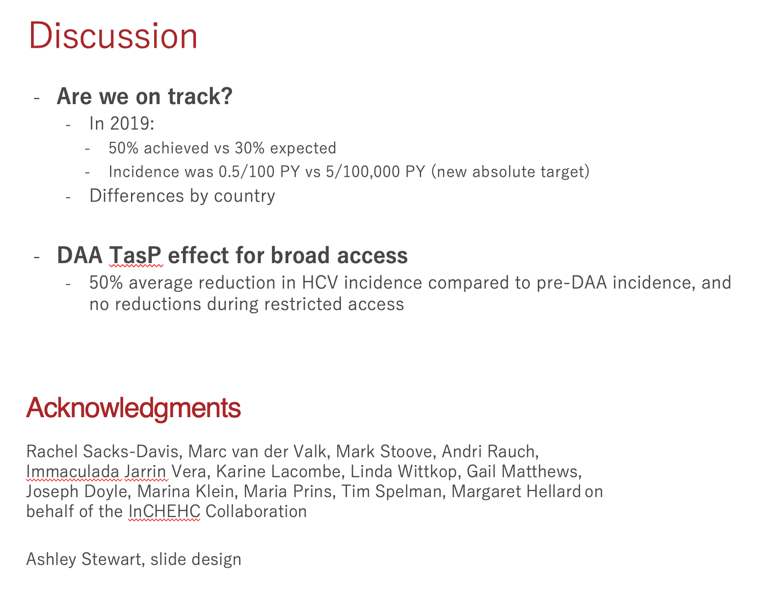
|
| |
|
 |
 |
|
|